1926 APBA Gold Cup
Ready for the Gold Cup Regatta
A Few Words about Some of the Boats Which Will Compete for the Classic Trophy
By Henry C. Ames; Photographs by M. Rosenfeld
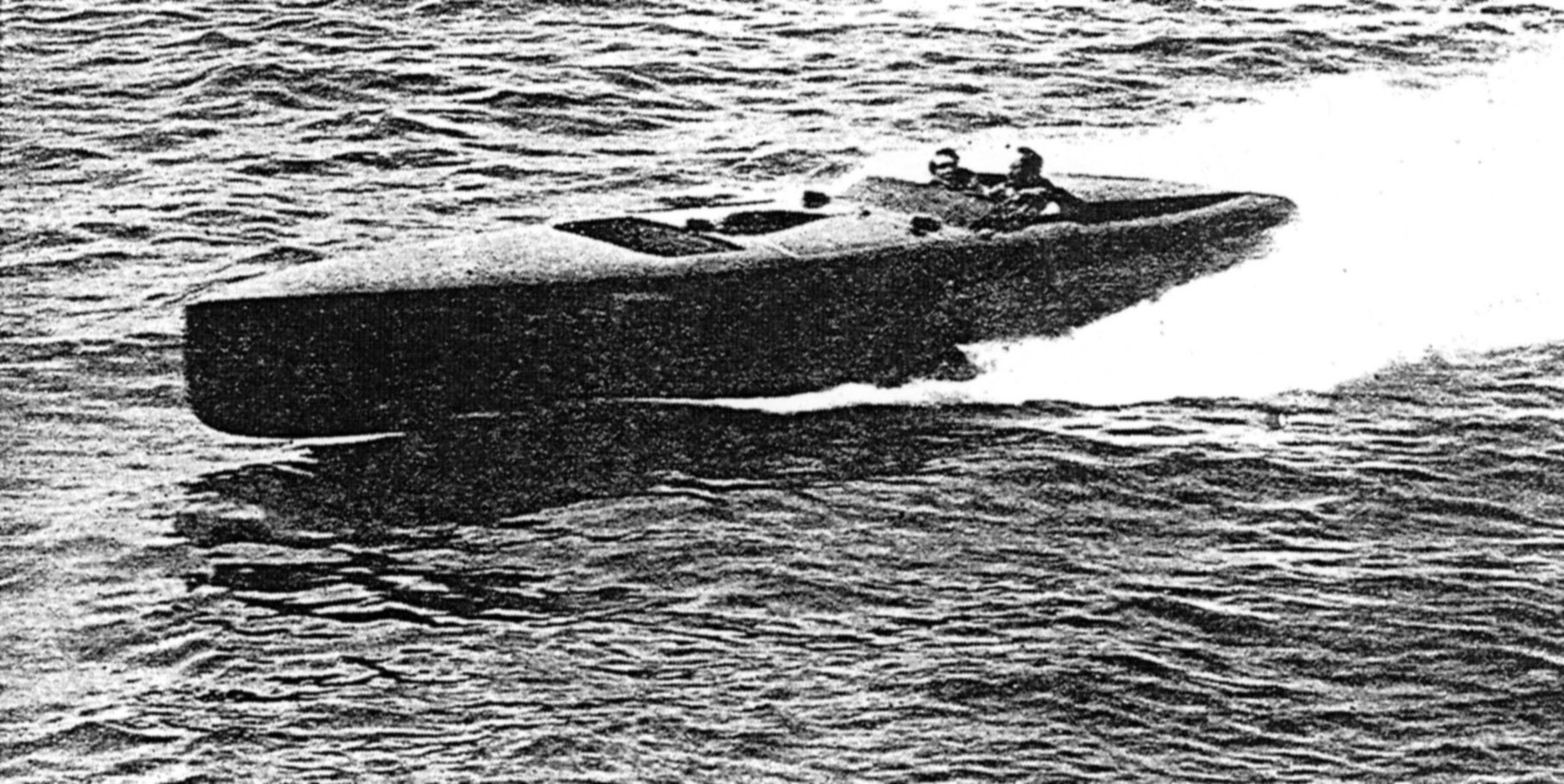
The greatest motor boat event of the year is the contest for the classic trophy known as the Gold Cup. This has been fought for since 1904 and some of the fastest times ever made have been hung up in Gold Cup contests. As the race gradually developed into an event for hydroplanes exclusively, those in authority decided to make a change and, accordingly, in 1922 devised a set of restrictions designed to produce a wholesome runabout which would be of some use to her owner after the races were completed. A Gold Cup contestant must be not less than 25 ft. on the water line, not less than 5 ft. water line beam, and the piston displacement of her motor or motors cannot exceed 625 cu. in. The hull must be of the displacement type, with no steps or breaks in the longitudinal continuity of her underbody. Naturally, in the first races under the new conditions speeds fell off, but they have been gradually increasing with each successive year until the winner last year hung up a record of 48.4 m.p.h. The race is run in three thirty-mile heats, and it takes a good boat, a good motor and an expert driver to secure the coveted trophy.
In 1924, Baby Bootlegger, owned by Caleb S. Bragg, [line of text missing] racing under the colors of the Columbia Y.C. last year. She defended the cup successfully, and will try to repeat in the 1926 contest.
Greater interest than ever before has been displayed this year, and at this writing there are fifteen entries These are as follows: Miss Columbia, owned by a syndicate of the Columbia Y. C., is a 1924 boat and won a heat at Detroit in that year. Hotsy Totsy, owned by Caleb S. Bragg of the Montauk Y. C., is a 1926 boat. She was designed and built by the Purdy Boat Works of Port Washington, L. I., and her motor is a Wright Gold Cup. In general appearance she bears a certain family resemblance to Baby Shadow, the little black racer that made such wonderful time in the first heat of last year's contest until a nipple on an oil line let go and stopped her. Baby Bootlegger, the defender, is also owned by Caleb S. Bragg and will carry the colors of the Montauk Y. C. She is a 1924 boat designed by Crouch and built by Nevins of City Island, and is distinctive in appearance. She is mahogany planked, finished bright, and her hull is streamlined to the limit. The sides and deck fair into each other in a smooth curve and her afterbody above the water is carried out to a sharp stern. Her motor is a Packard Gold Cup.
Another boat which raced last year is Baby Shadow, owned by Carl G. Fisher of the Montauk Y. C. She was the smallest in apparent size of any of the 1925 contestants, looking, when under way — and indeed, when seen out of the water — hardly any larger than a 151 hydroplane. She is a Purdy product and her motor is a Wright Gold Cup. From the north shore of the Sound comes Greenwich Folly, owned by George H. Townsend and entered by the Indian Harbor YC. F.K. Lord designed her and last year she was entered under the name of Miss Motometer, but she did not start in the regatta. During the winter some slight alterations have been made, the position of the rudder, for instance, having been altered a few inches and the boat now steers perfectly and is, we are told, even faster than before. Her motor is a Packard Gold Cup. Another 1925 contestant is Mrs. Delphine Dodge Cromwell's Nuisance, entered from the Montauk YC. Nuisance, like the other Detroit boats, has been thoroughly groomed during the winter.
Carl G. Fisher has entered Shadowvite, a new Purdy production that bears the earmarks of those designers' boats. She will be powered with a Wright Gold Cup motor. Still another Purdy boat is Imp. She is owned by Richard F. Hoyt, owner of the famous runabout Teaser, and will fly the colors of the Montauk YC. A Wright Gold Cup motor is her power plant.
A second entry from the Columbia Y. C. is Miss Frolic, owned by Walter P. Chrysler. She was built by Robert Jacob and is unusual in being a twin screw boat. She has two Chrysler motors and is a slippery looking craft.
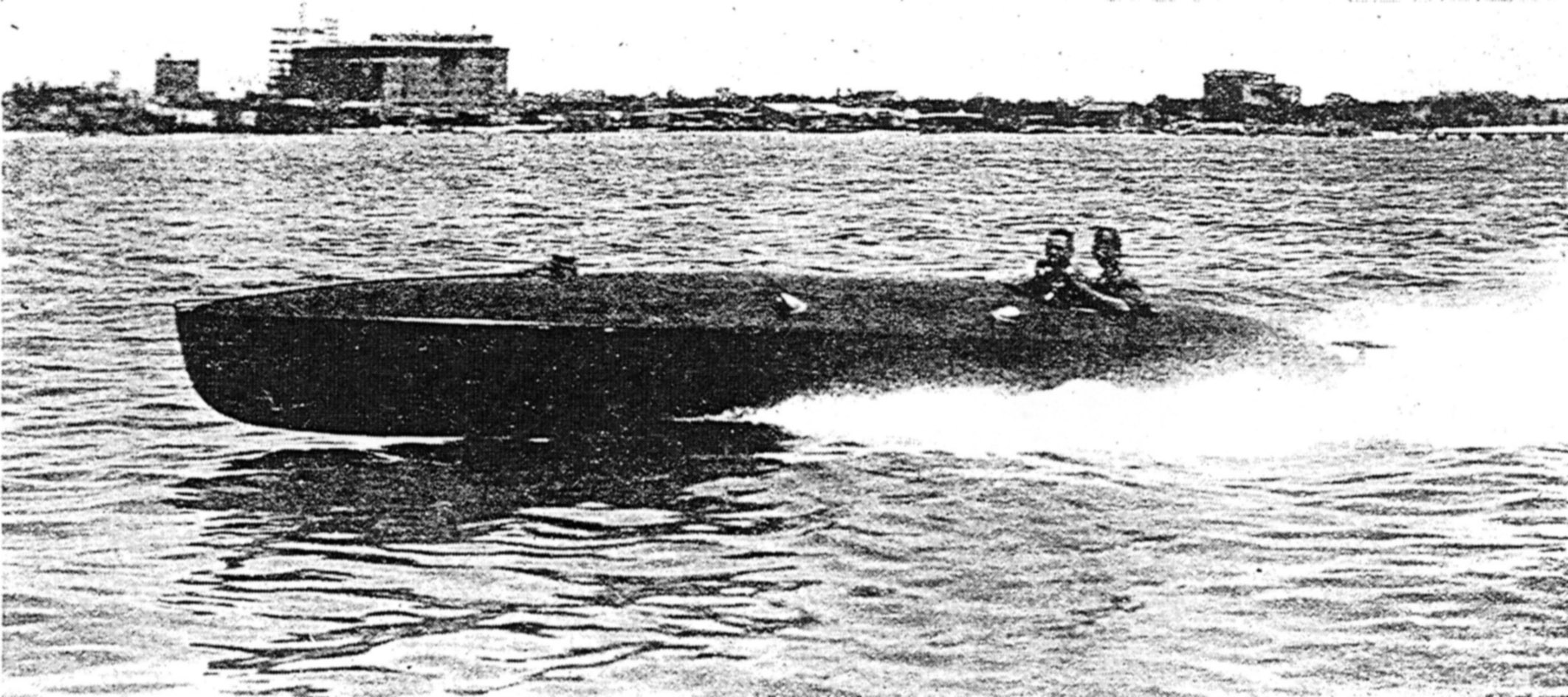
From Florida comes Sara De Sota, entered from the Sarasota Y C. She was designed and built by the Simmons Boat Works of Chicago, and her motor is a Packard Gold Cup. Her owner is Forrest Adair, Jr. Except for a trial run in the St. Augustine regatta, she has never appeared in any races. Vice Commodore Blossom of the Sarasota P. B. A., one of the best known drivers in the South, will pilot her in the contest. Early reports credit her with a speed of 55 m.p.h.
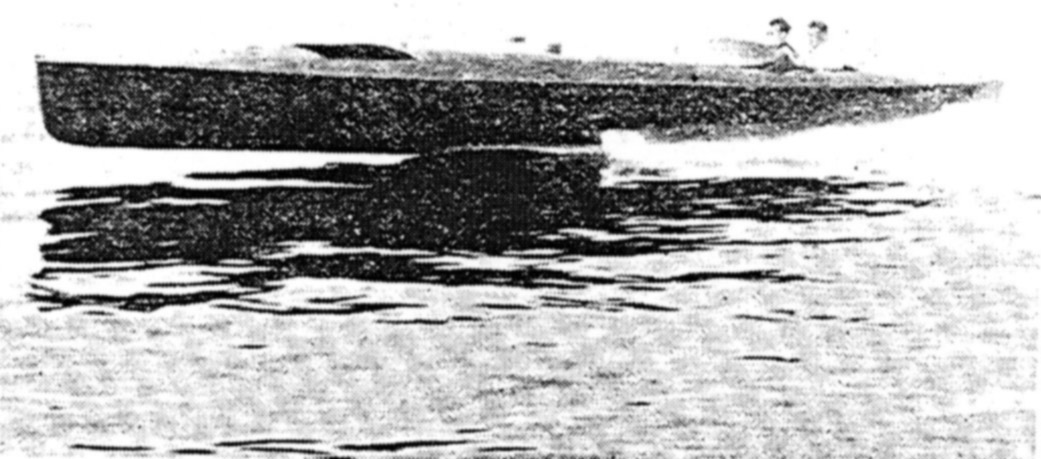
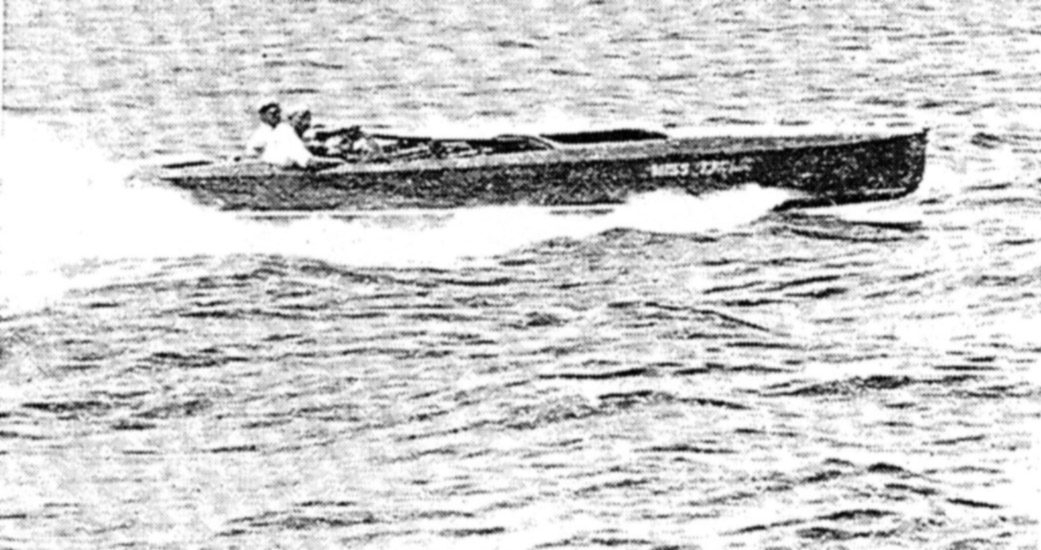
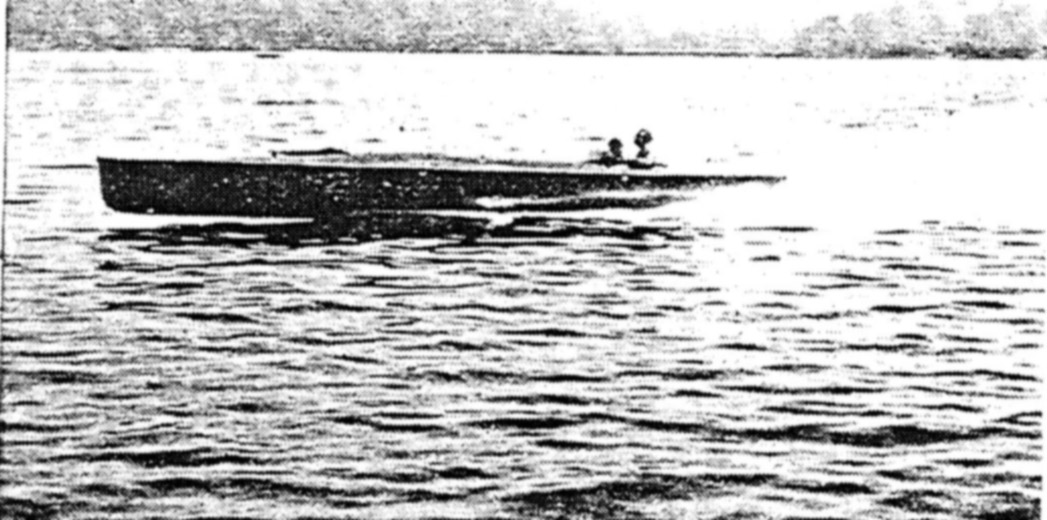
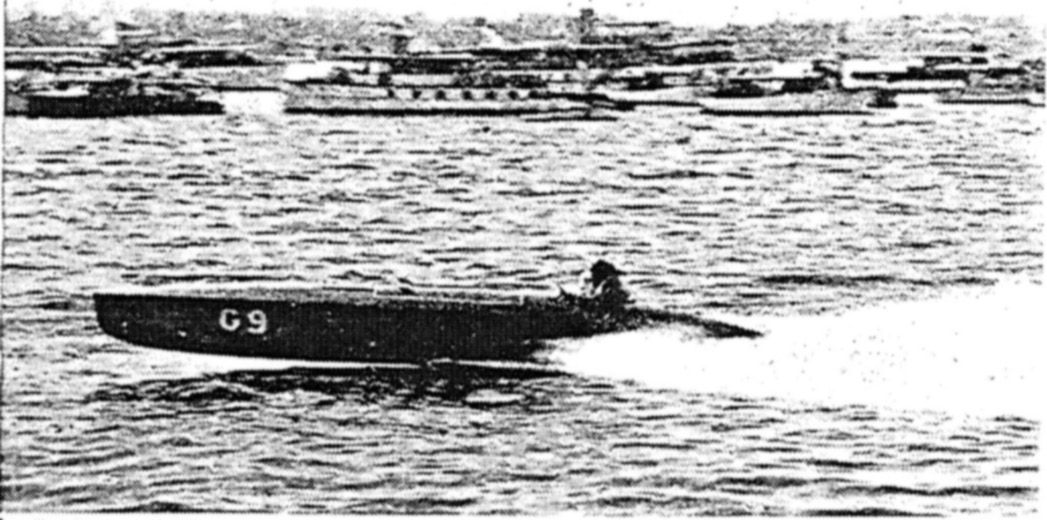
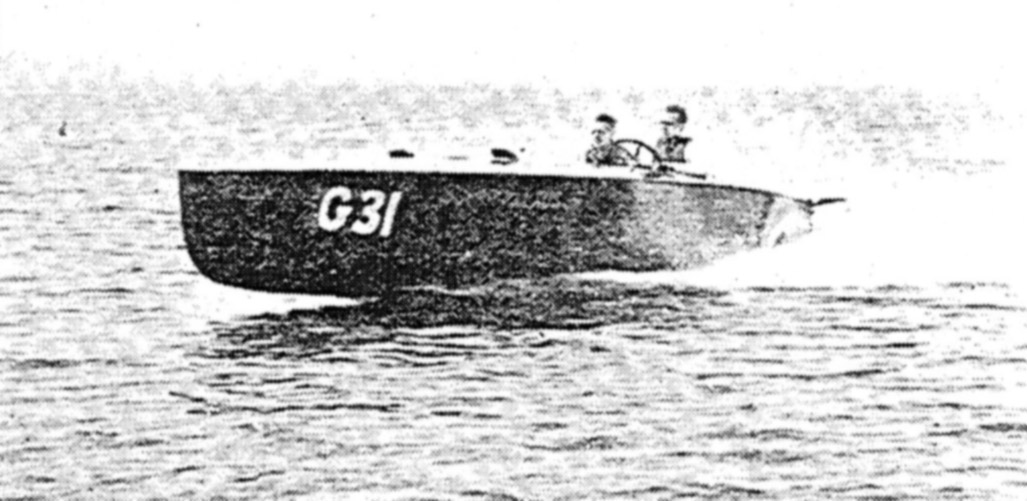
Horace E. Dodge of Detroit is entering four boats. Two of these are 1925 jobs. Impshi, carrying the colors of the Dodge Dealers’ Association, and Solar Plexus, which will fly the colors of the Detroit Y. C. In addition, Mr. Dodge has entered Watercar Detroit and Baby Watercar, stock 26 ft. Watercar hulls, with special motors. Gossip states that two of the Dodge flotilla will be driven by 24 cylinder Duesenberg motors. These power plants are said to have developed from 420 to 440 hp. on the block. Whether they can show this in the boat is an interesting question. Incidentally, we might mention that the horse power developed by the Gold Cup motors has risen from a little over 200 to about 300, quite a power plant for a 25 ft. runabout.
A veteran racer which has appeared in Gold Cup contests before and which just missed winning the coveted trophy in 1923, is Palm Beach Days, originally Harry Greening's Rainbow III. She was built by Ditchburn Boats, Limited , of Gravenhurst, Ontario, and her motor is a Packard Gold Cup. She is owned by Commodore Alfred H. Wagg of Palm Beach and Vice Commodore Win McP. Bigelow of Easton, Md. In Florida last winter she won the Interstate Trophy, and at the Louisville regatta of the Mississippi Valley Power Boat Association she hung up a new record in the 625 class and did some fast stepping in the Free-For-All race for runabouts. Just the other day she "did her stuff" at the regatta of the Miles River Y. C.
There will be other events at Manhasset on the 21st and 22nd, including two races for Biscayne Babies, the peppy little one-design boats built by Purdy and powered with Scripps 100 hp. motors. The litre and a half boats will also race, Dixie Flyer, Little Shadow and, we believe, Rainbow V. These are the three which went to England from this side of the Atlantic, and it will be interesting to see what speed they show in competition in water free from driftwood and with an absolutely clear course.
The Dodge Trophy will bring out most of the Gold Cup boats and in addition some larger craft which are not eligible for the 625 class but were built to compete for the Dodge trophy and the Detroit Sweepstakes. Purdy has built for Caleb Bragg Rascal, a long, lean, rakish black boat driven by one of the big Packard motors. The same designers and builders have turned out a somewhat similar racer for Carl G. Fisher. She is named Rowdy and will have a power plant like that of Rascal.
But perhaps the must interesting of all the new boats is Cigarette IV, just completed at the shop of the Brewster Body Corporation in Lung Island City. This craft is from designs of Frederick K. Lord and is a double ender in outward appearance. As a matter of fact, she has a small transom with the hull carried out above it to a sharp stern. Her motor is a V-1400 Curtiss. A must unusual thing about this boat is the material of which she is constructed. Hull plating, frames, deck beams and stringers are of duraluminum, heat treated and then polished. The engine bearers are of steel, and the construction of the boat suggests a torpedo boat destroyer. Frames and deck beams are of duraluminum Z bars closely spaced and with deep floors at fairly frequent intervals. She is a marvel of lightness and, with her polished sides, will be a noteworthy boat in appearance. She is 35 ft. long and 6 ft 6 in beam. The design has been checked by model tests and remarkable speed is expected of her.
All in all, the Gold Cup regatta this year will be the high point of the season's racing, and we look forward confidently to seeing all records smashed.
(Reprinted from Motor Boat, August 25, 1926)
